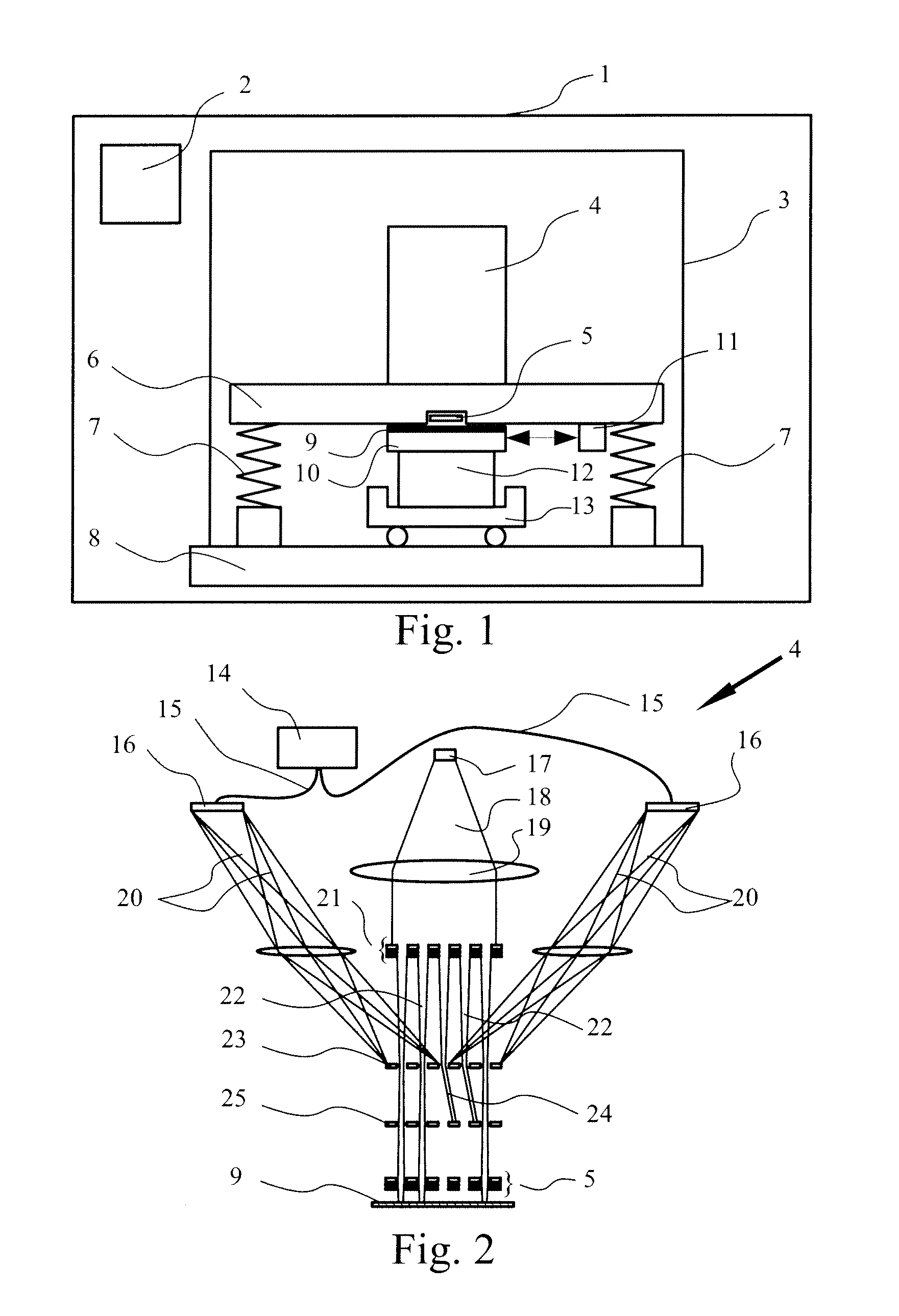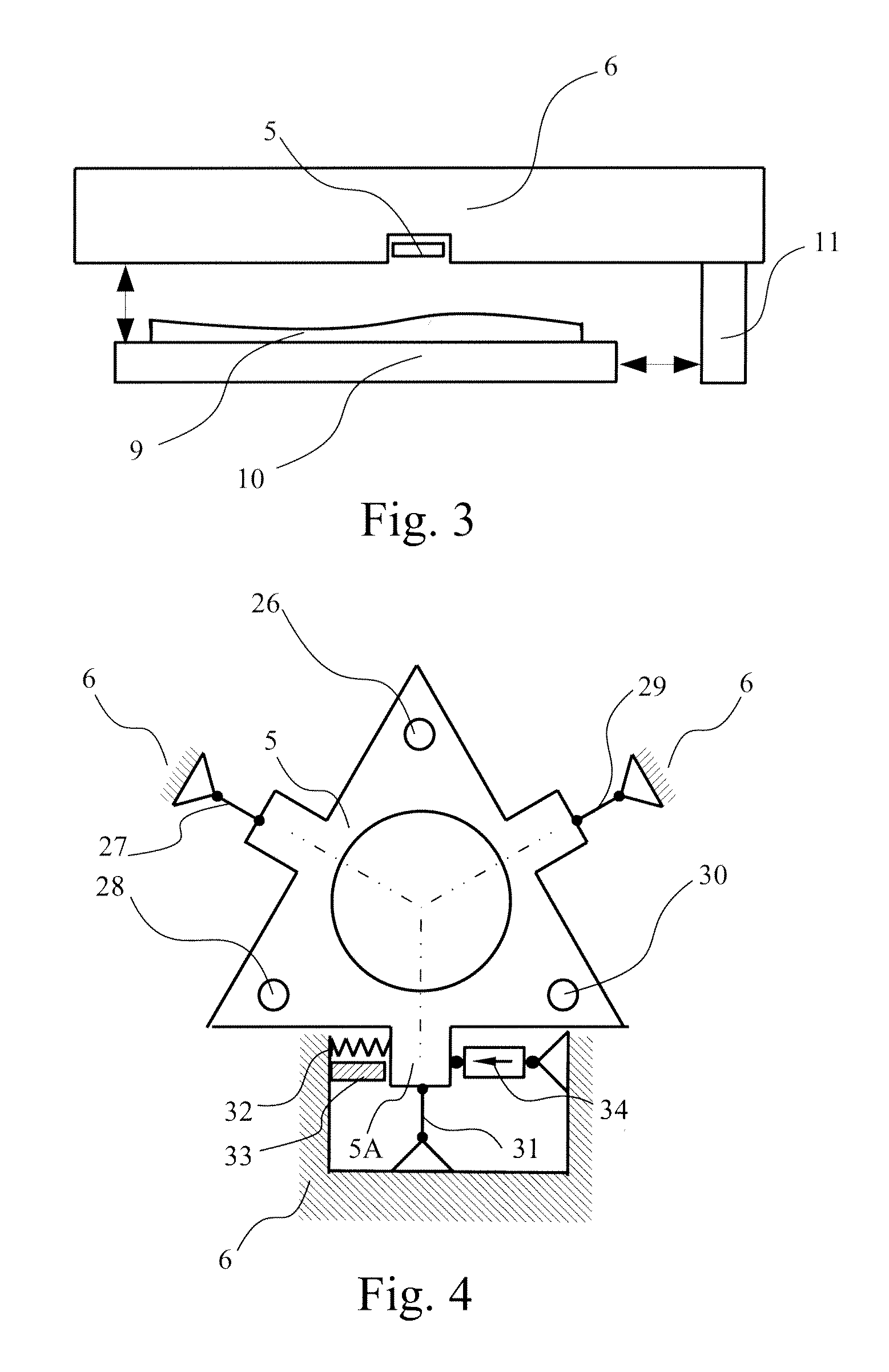In this process very high accuracy is of prime importance, implying complex and expensive actuation and positioning means.
Therefore, for as far as known in the art, most
maskless lithography systems are combined with a stage of relatively simple design, i.e. having the
disadvantage of low
throughput and / or limited functionality.
A further complication towards successful
exposure lies in the fact that while the known charged
particle system has means to compensate for errors in the XY-plane of the target using the deflection in the writing direction and the movement of the target holder, it is unable to correct for rotational errors using said deflection and movement of the target holder.
Said rotational errors, originating from misalignment around the Z-axis of the
projection system and target, in fact from insufficient accuracy in the guidance of the stage in the X- and Y-direction respectively, ultimately result in a
position error with this effect being increased when projection takes place further away from the
centre of rotation, thereby increasing the accuracy requirements with regard to rotational errors for the target
positioning system even further.
These known positioning systems, for as far as they can be adapted to
maskless lithography, are mostly inappropriate for use in a
maskless lithography system at least in the sense of e.g. size, costs and vacuum compatibility.
Also, electromagnetic dispersion fields as commonly present at actuators, in particular electromagnetic actuators such as Lorentz motors, are normally undesirable in charged particle projection systems since these electromagnetic fields negatively influence the quality of
exposure.
When used, electromagnetic actuators invariably necessitate complex magnetic shielding, increasing the complexity and cost of the maskless
lithography system.
Where embodiments of positioning systems are disclosed in combination with charged particle
exposure systems, they are up to now of a conceptual or relatively expensive nature, suited for prototyping purposes, rather than for large scale manufacture.
Said measurement system, also referred to as
metrology system, represents an expensive part of the
wafer positioning system in commercially available lithography systems.
In this system many features are to be duplicated, implying a technically complicated and costly solution.
As
charged particle beam systems, in general maskless systems, by their nature have a relatively low manufacturing output; this increased complexity brought on by high
wafer throughput in optical lithography is not necessary and actually unwanted.
Combination of at least this known industrial target stages with modern
charged particle beam systems, in particular maskless lithography systems is thus undesired.
Another
disadvantage of this known system is that it offers no means for adjusting in the Z-direction and is therefore unable to correct errors in the Z-direction, for instance errors due to thickness variations of the target.
However, this timing adjustment only allows for corrections in one direction, effectively having only one degree of freedom.
This method is unable to correct for errors in the Z-direction, for instance errors due to thickness variations of the target, and rotations around the Z-axis due to rotational errors.
In the latter case, the document does not teach how the adjustment in the Z-direction may be achieved.
This known approach does not allow for the compensation of rotational errors around the Z-axis, which are technically more challenging to achieve, especially in a multiple beam charged
particle system.
Measurement and control systems of this type are typically costly, increasing the total cost of the lithographic apparatus.
A further
disadvantage of this known system is that it uses Lorentz motors for actuation implying electromagnetic dispersion fields.
 Login to View More
Login to View More  Login to View More
Login to View More 


